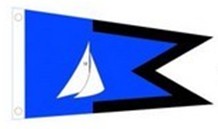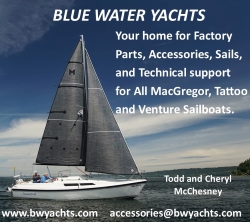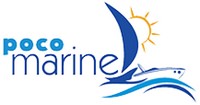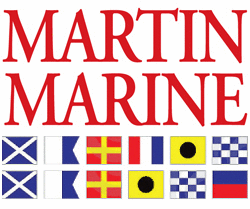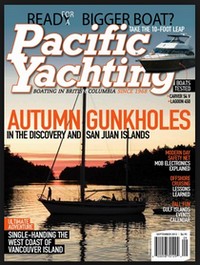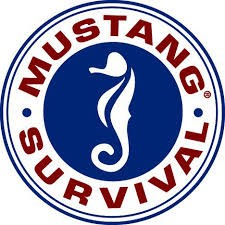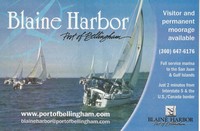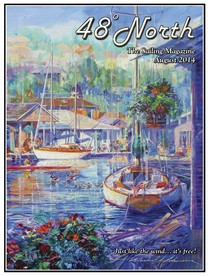Forum Replies Created
-
AuthorPosts
-
That’s great news Bachus.
This is one of the best advantages of owning a trailer-sailor, towing it with a car that can fit in the cockpit!
But she is safe and sound now for you to customize all those dream upgrades over the winter. And remember … drilling holes in a boat is okay – as long as they are above the water line 🙂
Darry
What lies at the bottom of the ocean and twitches?
…. a nervous wreck! 🙂
How much did the pirate pay for his peg-leg and hook?
…. An arm and a leg. Ah ha ha ha!
Our Coleman 2-burner propane stove uses the small 1 pound green propane cans. They attach to the stove and sit ON-TOP of the galley counter ONLY when we are using the stove, otherwise they are kept in the cockpit with the other fuel.
Origo makes about the best size 2-burner or single burner alcohol stove. Some models have both alcohol and an A/C element.
Attachments:
You must be logged in to view attached files.John, you have several options.
We installed (bolted to the galley top) a standard 2-burner Coleman propane stove into our 2000X.
It uses one pound green propane cans so no worry about leaks, and we store the propane cans in the cockpit fuel locker.
We attached a wood cutting board on the top to add extra working space in the galley, and rust painted the stove black & silver, and it’s still going strong after 8 years.
Plus we have a portable single element butane unit for cooking crabs on the dock, or taking onshore for potluck dinners.
(See photo below)* Counter flush mount options are; Origo or Wallace. I’m sure you’ll get some other members comments on those.
Attachments:
You must be logged in to view attached files.It can’t be … not yet?
Hey gang, we know it’s coming sooner or later and for those that put their boat up for the winter I dug deep in the archives to find this thread and dust it off for us all … it’s worth the re-read of the winterize checklists from some of our members.
Besides the engine and water systems maintenance, we still take everything (cusions, life jackets, batteries, first aid kit, electronics, etc) off the boat and clean inside bow to stern with bleach and install dry-z-air containers.
We put Windchime up this past weekend and gave the trailer a fresh coat of rust paint as well.
Does anyone have any new winterizing tips to share?
Darry
Attachments:
You must be logged in to view attached files.That video looked like great fun Cenote!
So glad you were both able to make it finally happen, and congrats on completing yet another step on your lifelong journey of Sea-person-ship 🙂 The CYA intermediate sailing certification process is a great accomplishment. Well done! … and pass my congrats along to Belinda.
And – good thing you had your PFD on, because if I’m not mistaking … did you almost take a little slip over the rail near the end of the video clip?
Willy,
Although the MacFoulie does not count towards any official certification, you do gain bragging rights in the club to be one of the many members who have been MacFouled 🙂
MacFoulies are part of our clubs Confidence Cruise Sailing Series that is members sharing their collective knowledge. The Series consists of; (1) MacFoulies (2) Securing for the Night (3) Night Sailing.
I’ve completed all of the CYA cruising and navigation courses (except offshore) and have gained valuable knowledge from them and to my understanding can be a skipper-for-hire with this certification. I took all of my certifications through Cooper Boating on Granville Island. It was costly and took a lot of time studying and going to the classes but was worth it.
Hey Willy,
I think that the biggest difference between many of the courses offer by the Canadian Power and Sail Squadron (CPS) and the Canadian Yachting Association (CYA) is the “on the water” component.
Although CPS offer great stand alone classroom education and has a very broad consumer reach, in most cases they do not include a practical onboard component. While most CYA course curriculums include both classroom and on the water instruction components, as well as both a written onshore knowledge exam and a practical exam to demonstrate the skills learned.
I have run through the complete CYA Certification program (excluding the offshore component). It is pricey and takes a lot of time – but the skills learned are invaluable both on and off the water. I know we have members that are very familuar with the CPS sailing programs and can probably elaborate more for you.
As far as;
– Charters: CYA advanced skipper certification qualifies for most bareboat charters.
– Teaching Sailing; CYA offers courses to become a CYA Instructor.My certifications;
– I teach Marine Weather courses for CPS.
– Certified by the CYA as an;
Advanced Coastal Skipper.
Advanced Coastal Navigator.
Celestial Navigator.This means I am certified to;
– act as skipper of a sailing cruiser up to 15 meters.
– onboard any modern rig and inboard engine.
– operating within 100 miles of shore.
– by day or night.
– in coastal or inland water.
– in any weather condition.
– The celestial navigation certification increases to beyond 100 miles from shore and terrestrial landmarks.Good luck on your sailing journey 🙂
Darry
“Sail Safe, and Leave Only Wake”I agree with Gemini, the two best purchases we have made are an AP and Full-Enclosure.
Most Raymarine AP’s can operate as either a “standalone” (hold course based on the fluxgate compass heading) or in Chart-Plotter “route-mode”.
If you have a chart-plotter engaged (and have it connected NMEA/Sea-Talk) in route mode to follow waypoints, then your AP can be programmed to follow this route and alert you when you have arrived at a waypoint, then request your approval to change course to next waypoint. (also adjusts for set and drift)
Also, the Raymarine AP has an auto-tack function for sailboats. You press the +1 and +10 button together and the boat will tack 90 degrees (or whatever set it for). Great for single handing.
As Gemini says, you can adjust the pilot rate of correction. We have ours set to a moderate mode, with the main reason so the wheel is not correcting all the time and using batter power.
Using an AP has improved my personal piloting immensely as I had (have) a tendency to over correct the wheel to often and too much, which leaves an “S” wake, and from a performance standpoint every time you turn the rudder it slows the boat down. I now engage the AP, leave my hands lightly on the wheel, and let the AP teach me when not to correct 🙂
We have a 2000 Suzuki 50 hp.
If the oil is clean and only 10 hours on it, I would just top it up.
But maybe newer 70 hps are different. I think Gemini and Ohama both have newer Suzuki 70 hp’s and may give you better advice.
Darry
I think that what and where you buy will be determined mostly by your personal value balance. But if your kicking tires and shopping price verse quality, I would give North Sails in Richmond a call. We have never bought a new sail from them but they have done all our repairs and sail work with what I consider good value. http://www.na.northsails.com/vancouver.aspx
-
AuthorPosts

